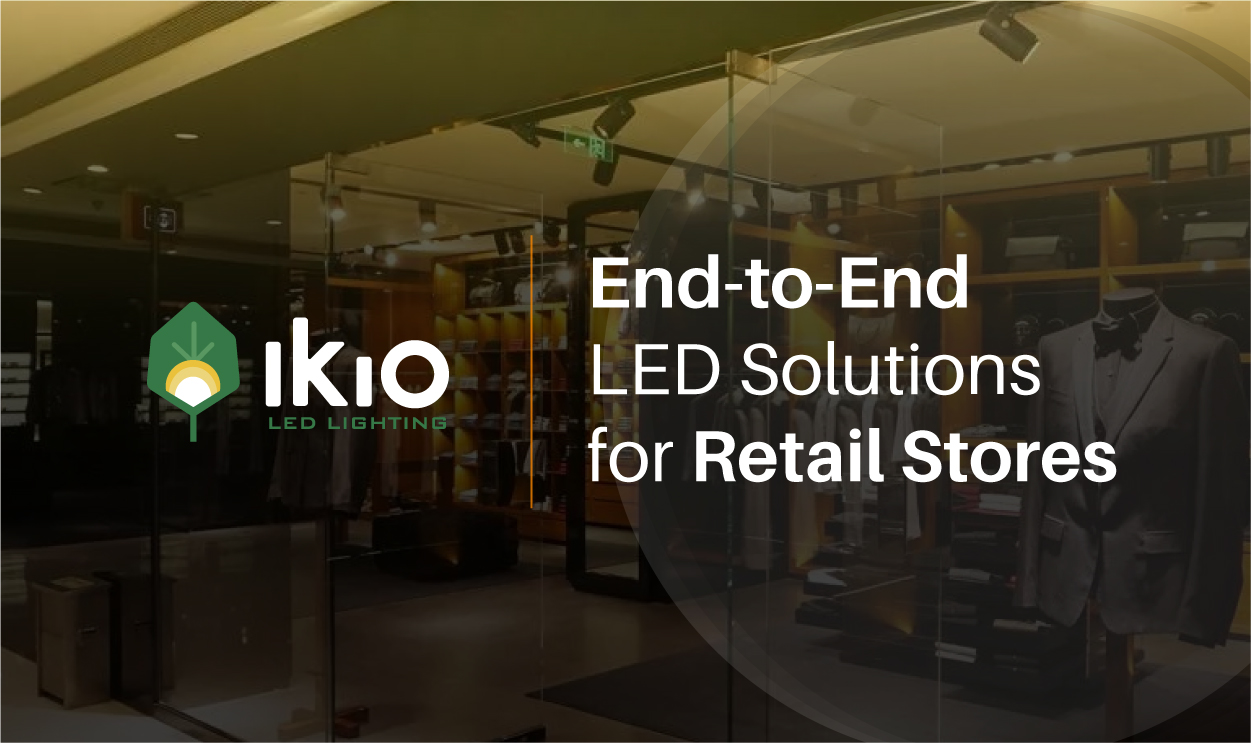
According to the U.S. Department of Energy, lighting accounts for 15–45% of a retail store’s energy consumption. A single upgrade to LEDs can slash that usage by up to 68%, but the impact runs deeper than energy bills. The right lighting increases dwell time, boosts product appeal, improves safety, and creates consistency across locations. In fact, studies show that retailers implementing strategic lighting see 2–6% increases in sales on top of cost savings.
Yet many retailers hesitate, not because they don’t see the value, but because they face a bigger question: How do we upgrade across dozens or hundreds of stores without disrupting operations, draining staff time, or missing rebates?
When speaking with operators of multi-site retail chains, the same themes emerge repeatedly:
Energy costs are unpredictable. Utility bills shift dramatically with season and region, and outdated lighting systems only magnify the expense.
Maintenance is relentless. Bulb outages across hundreds of fixtures require staff attention, eat into labor hours, and create poor customer impressions.
Consistency is missing. One store feels bright and inviting; other feels dim or uneven. Customers notice, and it weakens brand identity.
Sales opportunities are lost. Poor color rendering makes merchandise appear dull. By contrast, high-CRI lighting has been shown to improve buying confidence and lift sales.
Safety can’t be compromised. Dark aisles, shadowy corners, and poorly lit parking lots increase liability and deter customers.
Upgrades feel overwhelming. Coordinating multi-site rollouts is logistically complex—different layouts, codes, and timelines slow down projects.
Incentives are missed. Rebates and tax credits can offset 30–100% of project costs, but the paperwork and compliance are often too cumbersome.
These aren’t just inconveniences. They directly affect profit, customer trust, and operational efficiency.
When retailers weigh a lighting upgrade, their needs are clear and practical:
Predictable savings they can model on a balance sheet.
Chain-wide consistency that reinforces their brand identity.
Fast ROI—ideally within two to three years, with help from rebates.
Low disruption during installs, so customers never feel the impact.
Better product presentation that makes merchandise irresistible.
Smarter systems with dimming, zoning, and occupancy controls to keep savings ongoing.
One accountable partner instead of multiple vendors pointing fingers.
This is where IKIO steps in. Instead of fragmented upgrades, IKIO delivers a complete, end-to-end LED solution that covers every stage—from planning to installation to long-term optimization. The process is designed around the realities of multi-site retail, addressing every pain point in one integrated system.
How the Process Works
1. Comprehensive Audits
Each store is assessed for energy usage, fixture condition, and layout. Savings aren’t guessed—they’re modeled upfront, so executives see the financial case before signing off.
2. Data-Driven Design
Photometric simulations map how light interacts with shelves, aisles, and displays. This ensures uniformity and product visibility, while also tailoring tones for specific merchandise zones.
3. Zone-Specific Fixture Selection
High-CRI LEDs for apparel and high-contrast displays.
Panels and troffers for general aisles with <5% lumen variation.
Exterior luminaires that make parking lots safer and more inviting.
4. Disruption-Free Installation
Phased rollouts, regional scheduling, and overnight installs ensure stores stay open and customers unaffected.
5. Rebates and Compliance Secured
IKIO manages rebate paperwork, energy code compliance, and certifications—capturing every available incentive.
6. Long-Term Support
With 50,000–100,000 hour lifespans, predictive maintenance tools, and extended warranties, costs stay predictable long after the upgrade.
High-CRI (95+) → True-to-life product colors that inspire confident buying decisions
<5% Lumen Variation → Even brightness across shelves and aisles for consistent visibility.
CCT 3000K–4000K → Warm-to-neutral tones that boost shopper comfort and engagement.
For a 25,000-square-foot retail store:
|
Factor |
Old Lighting |
LED Upgrade |
Annual Savings |
|
Energy use |
165,000 kWh |
66,000 kWh |
99,000 kWh |
|
Energy cost @ $0.14/kWh |
$23,000 |
$9,200 |
$13,800 |
|
Maintenance |
$5,000 |
$500 |
$4,500 |
|
Total savings/year |
|
|
$18,300 |
Now multiply that by a 100-store chain:
Nearly $2M saved annually on energy and maintenance.
Payback in under three years—often faster with rebates.
Additional 15–20% savings possible with smart controls and automation.
For CFOs, the upgrade is a financial strategy—predictable savings, strong ROI, and incentives captured.
For Operations Directors, it’s about minimizing disruption and standardizing results across hundreds of sites.
For Marketing and Merchandising teams, it’s about better product visibility, consistent ambience, and brand experience.
Lighting touches every department. That’s why an end-to-end solution isn’t just convenient—it’s essential.
Retail chains don’t need another project to manage. They need a partner who simplifies everything—one provider, one solution, one path to lower costs and better stores.
That’s exactly what end-to-end LED solutions deliver: measurable savings, consistent customer experiences, safer environments, and lighting that supports both today’s operations and tomorrow’s growth.
Looking for an expert? Let’s connect you with a retail lighting specialist today.
Que. How much can a retail chain really save with an LED upgrade?
Ans. Most retailers cut lighting energy use by 40–68%, which often translates into thousands of dollars saved per store each year. Add reduced maintenance and utility rebates, and many chains see a payback in under three years.
Que. Will upgrading disrupt store operations?
Ans. No. With phased or overnight rollouts, upgrades can happen while stores stay open. Most installations are designed to cause zero disruption to shoppers or staff.
Que. Can the same lighting design work for every store format?
Ans. Not exactly. A grocery store, a fashion outlet, and a convenience chain all need different lighting strategies. That’s why good solutions use zone-specific designs—bright general lighting for aisles, high-CRI accent lighting for displays, and durable fixtures for parking lots.
Que. What makes IKIO’s end-to-end solution better than working with multiple vendors?
Ans. Simplicity. With IKIO, one partner handles everything—from audits and design to installation, rebates, and long-term support. That means no gaps, no finger-pointing, and a smoother path to results across your entire chain.